15 No Grass Front Yard Ideas to Transform Your Landscape
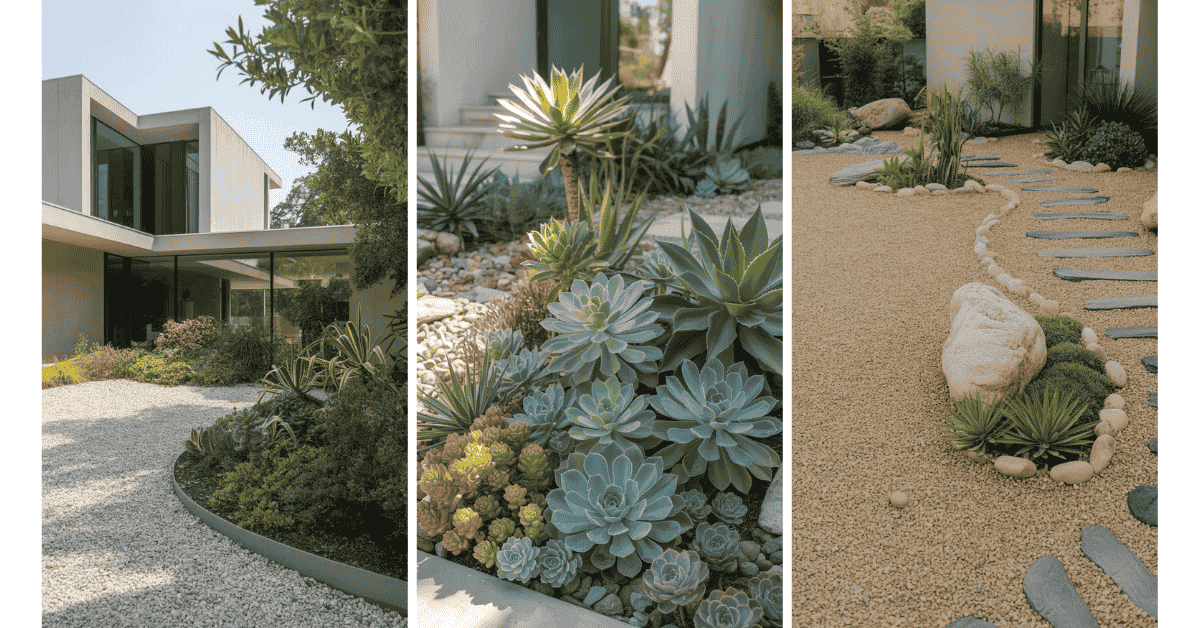
I used to think a perfect front yard meant a lush, green lawn. But after years of mowing, watering, and weeding, I realized there had to be a better way. Ditching the grass was one of the best decisions I’ve made for my home.
It not only saved me time and money but also opened up a world of creative landscaping possibilities.
If you’re ready to say goodbye to the high-maintenance lawn, you’ve come to the right place.
I’ve gathered 15 fantastic no-grass front yard ideas that are beautiful, low-maintenance, and eco-friendly.
Let’s explore how you can create a stunning yard without a single blade of traditional turf.
1. Plant a Wildflower Meadow
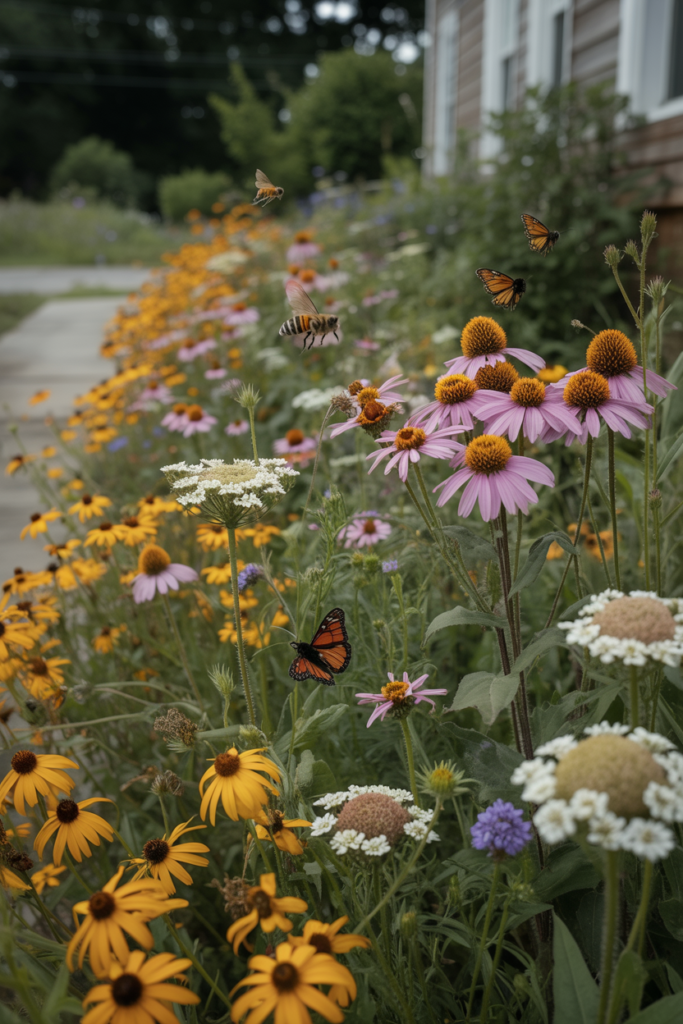
Instead of grass, I imagined a vibrant tapestry of colors and textures. Planting a wildflower meadow brought that vision to life. I chose a mix of native perennials and annuals, which created a stunning display that changes with the seasons.
A wildflower garden is a haven for pollinators like bees and butterflies, adding life and movement to my yard.
I’ve found that using native species is key, as they are already adapted to the local climate and require minimal watering once established.
2. Create a Succulent Garden
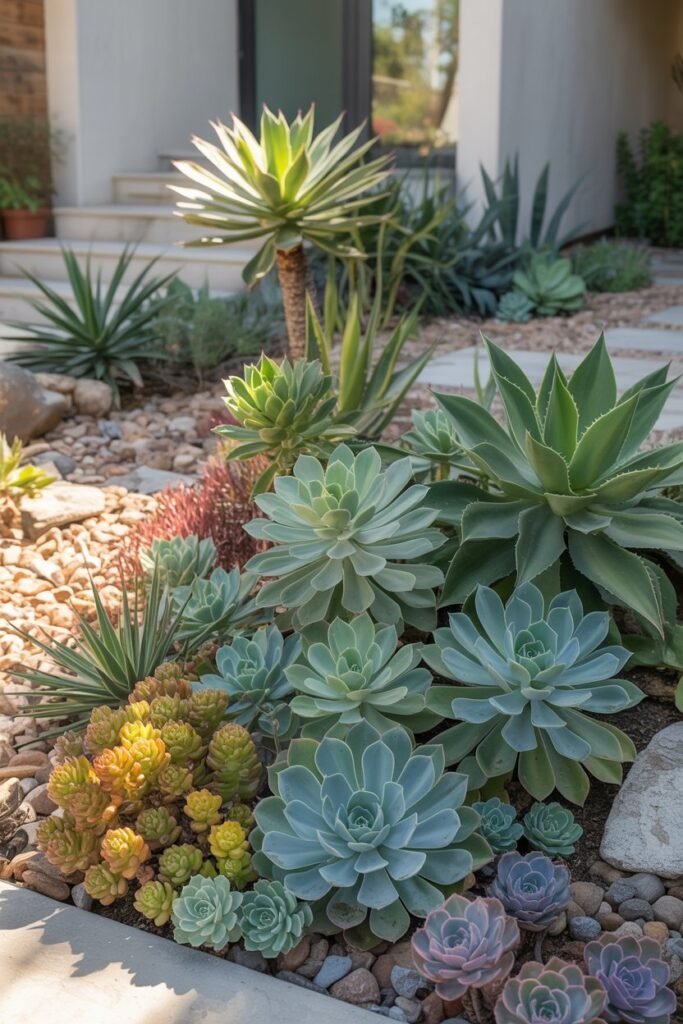
For a truly low-water and architectural look, I turned a sunny patch of my yard into a succulent garden. Succulents come in an incredible variety of shapes, sizes, and colors, allowing me to create a visually interesting landscape that looks great year-round.
I used a mix of echeverias, sedums, and agaves planted in well-draining, rocky soil.
This type of garden is perfect for dry climates and requires very little attention. Adding a few larger, sculptural succulents can create a dramatic focal point.
3. Use Low-Water Groundcovers
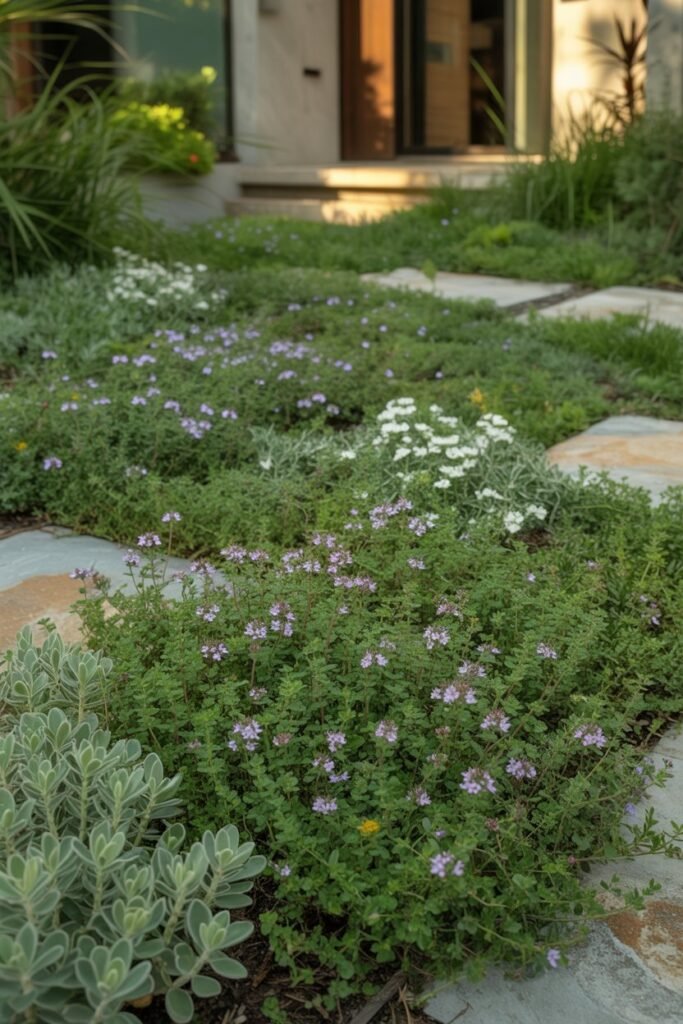
I wanted something green that mimicked the look of a lawn without all the work. Low-water groundcovers were the perfect solution. I planted creeping thyme between my paving stones, which releases a lovely scent when I walk on it.
Other great options I’ve seen are white clover and Turkish Veronica. These plants spread to form a dense mat, effectively suppressing weeds while requiring a fraction of the water that traditional grass needs.
4. Incorporate Ornamental Grasses
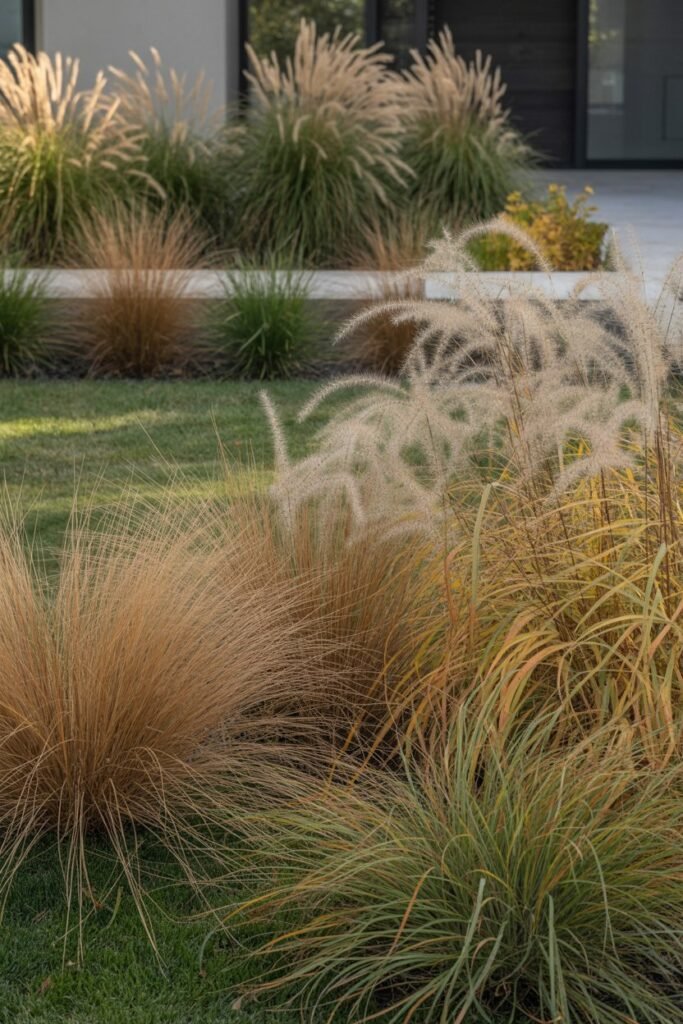
To add texture and movement, I dedicated a section of my yard to ornamental grasses. Varieties like little bluestem and prairie dropseed have a soft, wispy appearance that catches the breeze beautifully.
These grasses are incredibly resilient and provide year-round interest. In the fall, their foliage turns to stunning shades of gold and bronze, and their seed heads provide food for birds through the winter.
5. Design a Gravel and Stone Landscape
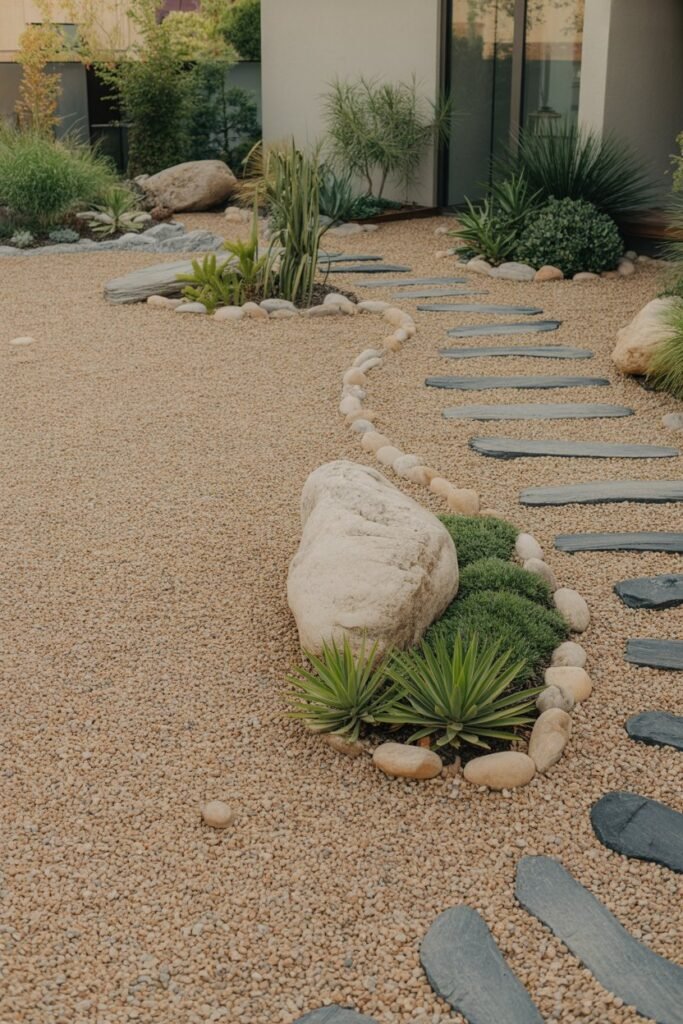
I replaced a large section of my lawn with gravel and stones to create a clean, modern look. I used a combination of pea gravel for the main area and larger river stones to create pathways and borders.
This approach is incredibly low-maintenance and provides a perfect backdrop for drought-tolerant plants.
I added a few strategically placed boulders to serve as natural focal points, giving the space a serene, zen-like quality.
6. Grow a Sponge Garden
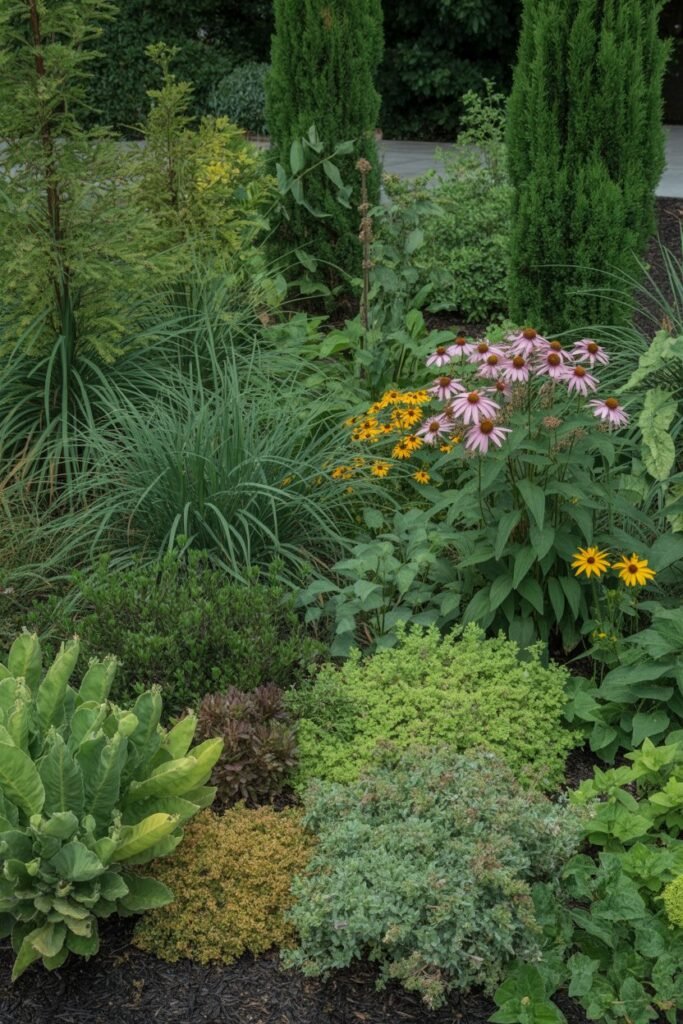
I learned about sponge gardens as a way to manage rainwater runoff, which was a problem in my yard. By planting a dense mix of perennials with deep root systems, I created a garden that soaks up stormwater like a sponge.
This not only helps prevent erosion but also nourishes the plants. I chose a variety of plants with different root depths, like swamp cypress and hardy perennials, to maximize water absorption and create a lush, layered look.
7. Fill the Yard with Evergreen Shrubs
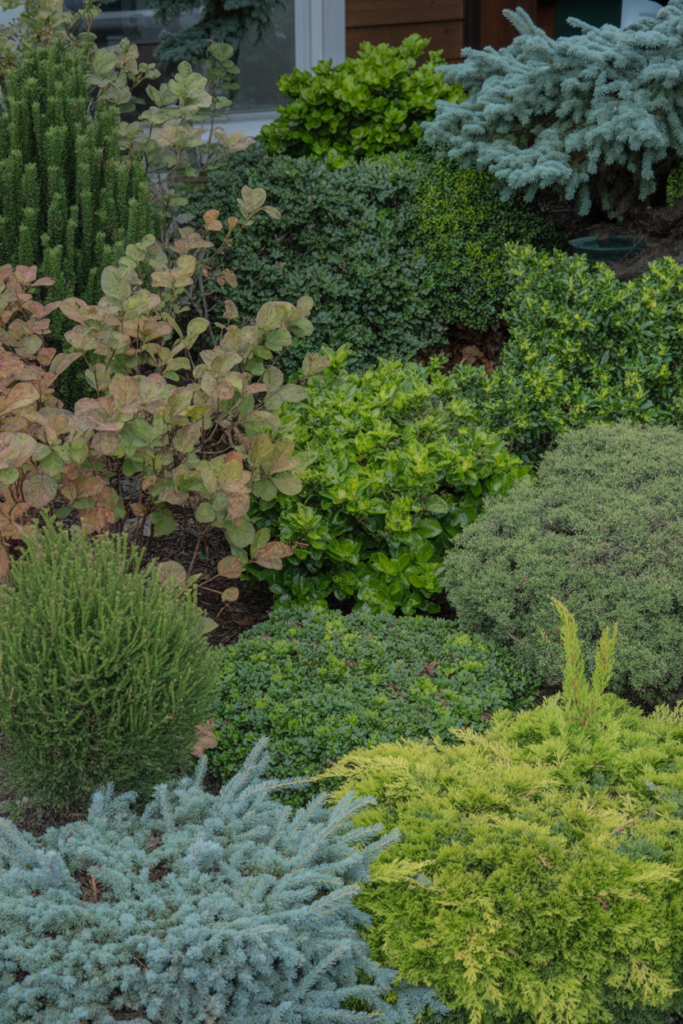
For a front yard that looks great even in the dead of winter, I incorporated a variety of evergreen shrubs. These plants provide a constant source of color and structure, no matter the season.
I mixed different textures and shades of green to keep it interesting. Plants like coral bells thrive in shady spots, while Kinnikinnick is tough enough to handle cold, exposed areas. It’s a reliable way to ensure my yard never looks bare.
8. Plant an Edible Garden
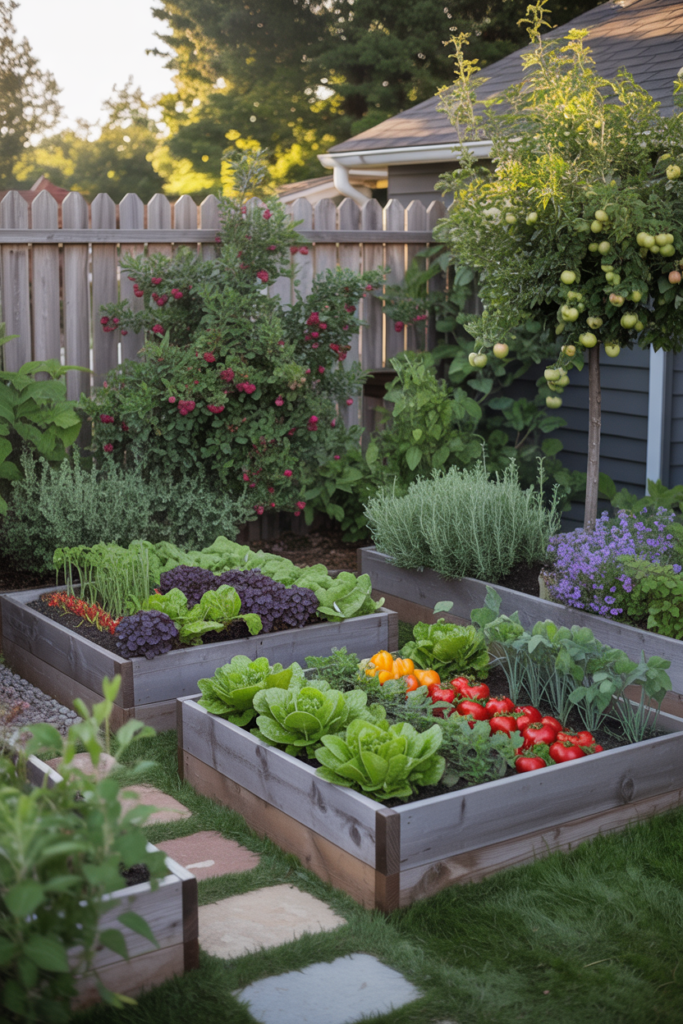
I decided to make my front yard productive by turning it into an edible garden. I installed raised beds for vegetables, planted berry shrubs along the fence, and tucked culinary herbs like rosemary and lavender into empty spaces.
Now, my front yard is a source of fresh produce for my family. Dwarf fruit trees are also a great option if you have a sunny spot. There’s nothing more satisfying than stepping out my front door to pick fresh ingredients for dinner.
9. Re-wild Your Stoop
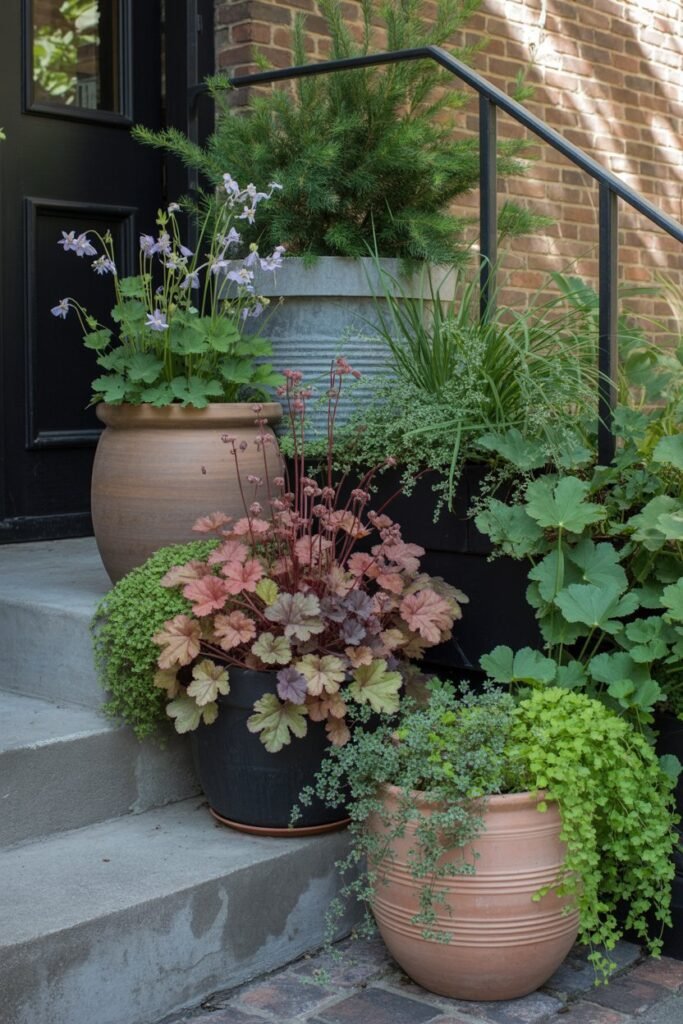
Even the smallest front yards can go grass-free. I focused on “re-wilding” my front stoop area by using containers filled with tough, native plants. Pots of Heuchera and Aquilegia provide long-lasting foliage and create a welcoming entrance.
This approach is perfect for urban settings. It softens the hard lines of a house and provides small pockets of habitat for local wildlife, proving you don’t need a large space to make a positive ecological impact.
10. Repeat Local Stereotypes
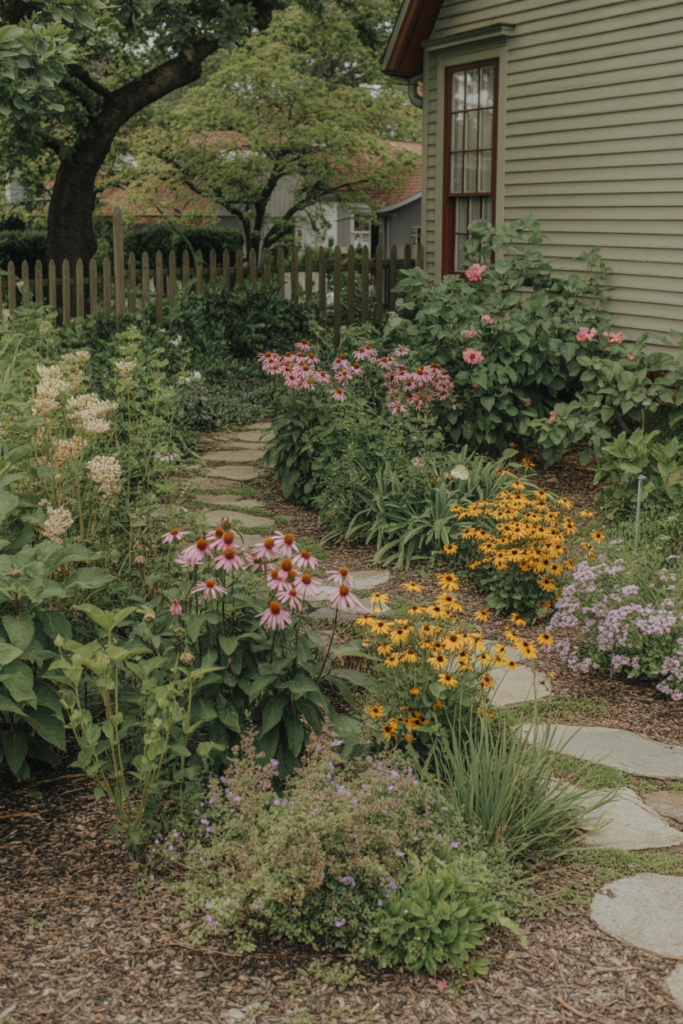
I took inspiration from the historic homes in my area by planting traditional, “pioneer” plants that have proven their resilience over generations. These are the stalwart flowers and shrubs you see in older, established gardens.
By choosing plants cherished by the pioneers, I created a garden that feels connected to the local heritage. These survivor plants are often tough, beautiful, and perfectly suited to the regional climate.
11. Balance Sharpness with Softness
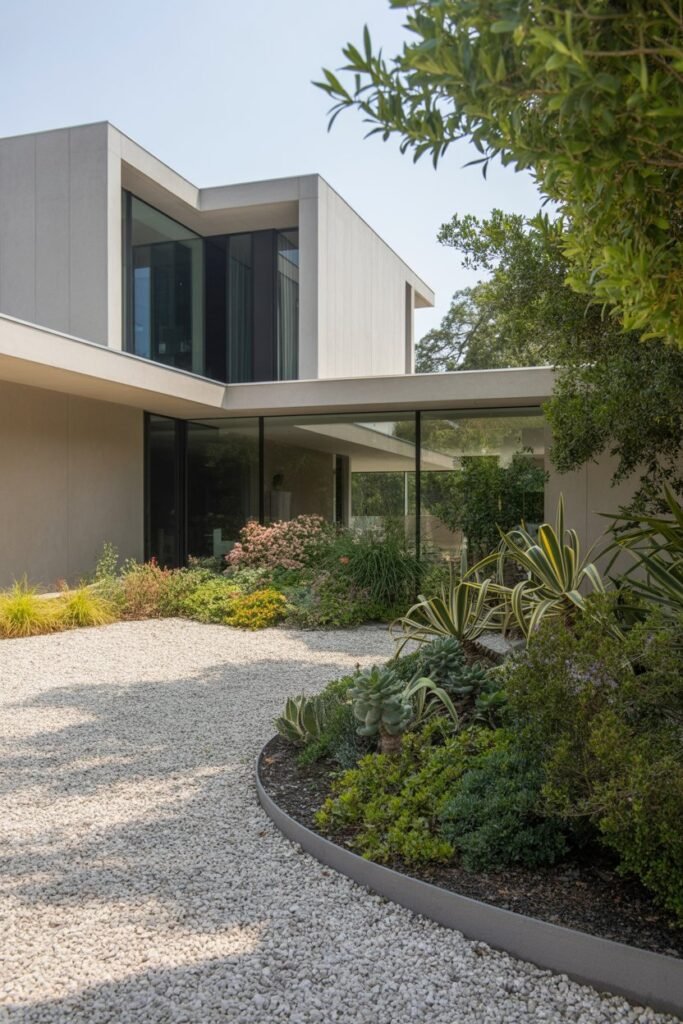
My house has very sharp, modern lines, so I wanted to soften its appearance with lively plantings. I created a generous border of permeable gravel around the perimeter and filled it with plants that have varied textures and forms.
This technique creates a beautiful contrast between the structure of the house and the organic feel of the garden. The permeable gravel also helps with drainage, allowing rainwater to soak into the ground.
12. Bring in an Eyecatcher
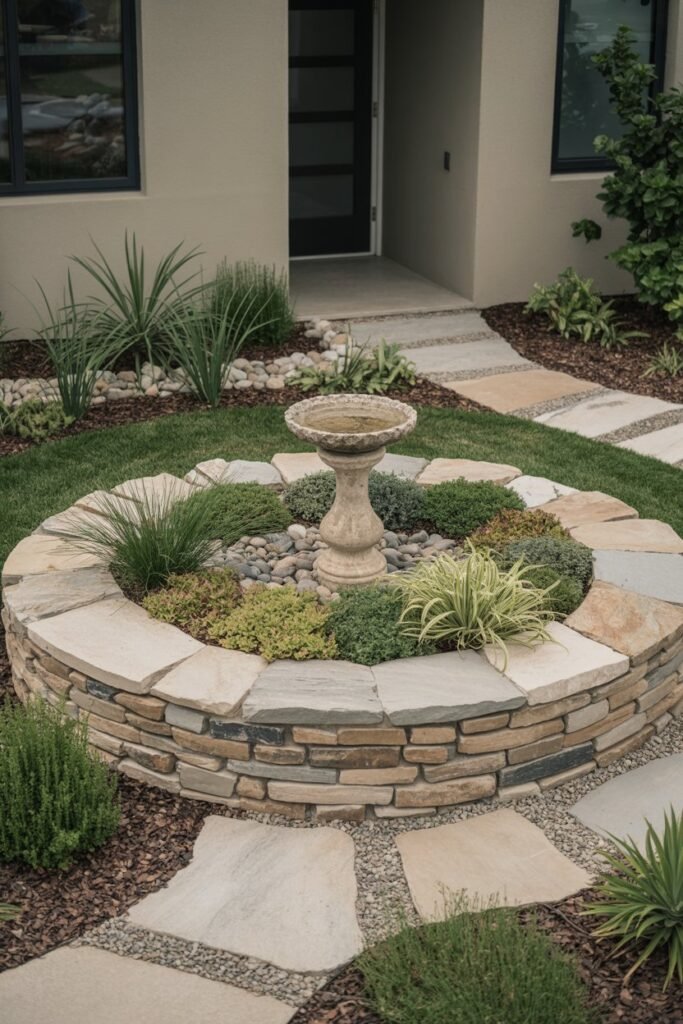
To create a focal point, I added a well-chosen artifact made from local materials. I built a loosely circular stone wall to outline a garden bed, which draws the eye and adds a sense of permanence to the landscape.
A simple birdbath, a unique sculpture, or a rustic bench can all serve as eyecatchers. The key is to choose something that complements the style of your garden and home.
13. Say Goodbye to Mulch with Layers
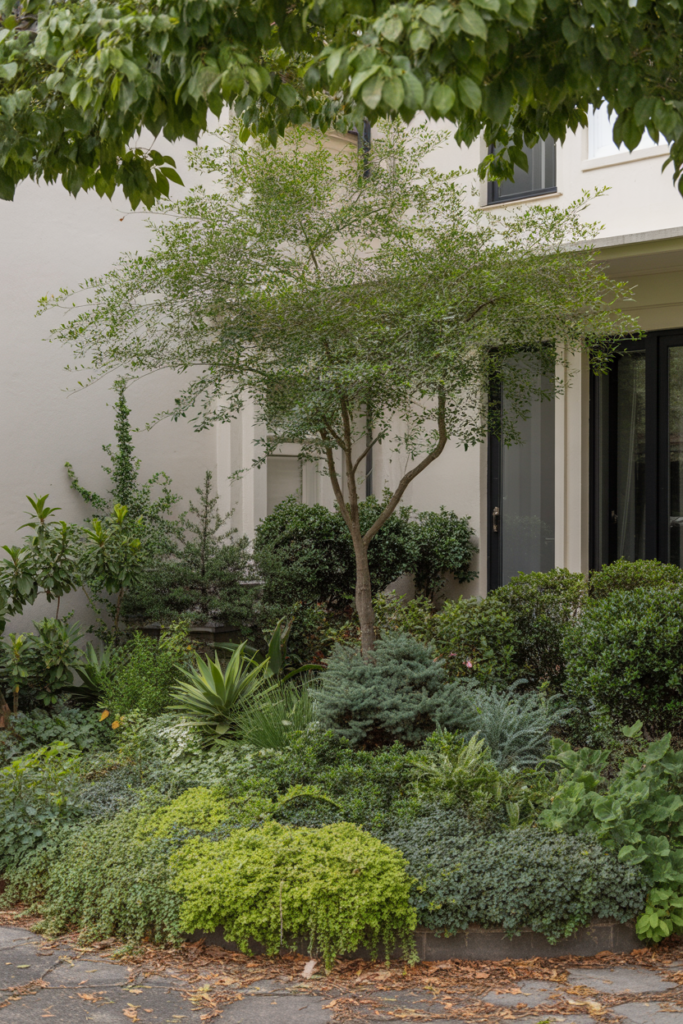
Instead of relying on mulch to cover bare soil, I created a self-sustaining ecosystem by layering my plantings. I started with ground-covering plants, added a middle story of shrubs, and topped it off with an airy, small tree.
This layered approach cools the soil, retains moisture, and suppresses weeds naturally. As spent leaves fall, they decompose and enrich the soil, creating a garden that practically takes care of itself.
14. Keep Half the Lawn
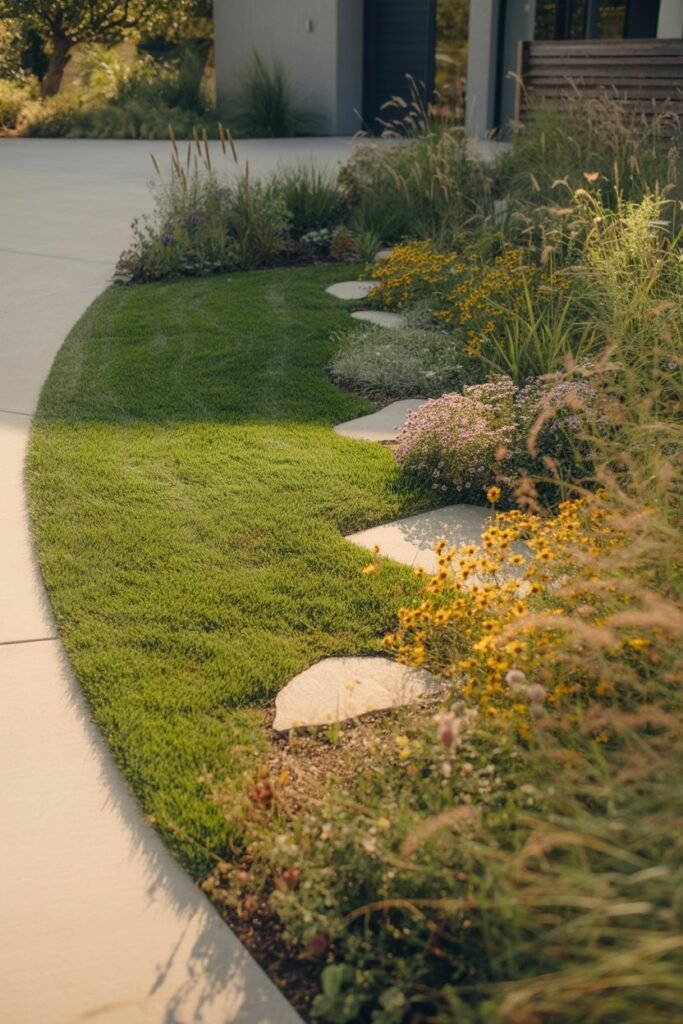
If you’re not ready to go completely grass-free, you can start by keeping half of your lawn. I did this in my side yard, replacing a section of turf with a “pocket prairie” of native plants.
This hybrid approach gives you the best of both worlds. You still have a small patch of grass for kids or pets to play on, but you also get the beauty and ecological benefits of a native plant garden.
15. Screen the Car
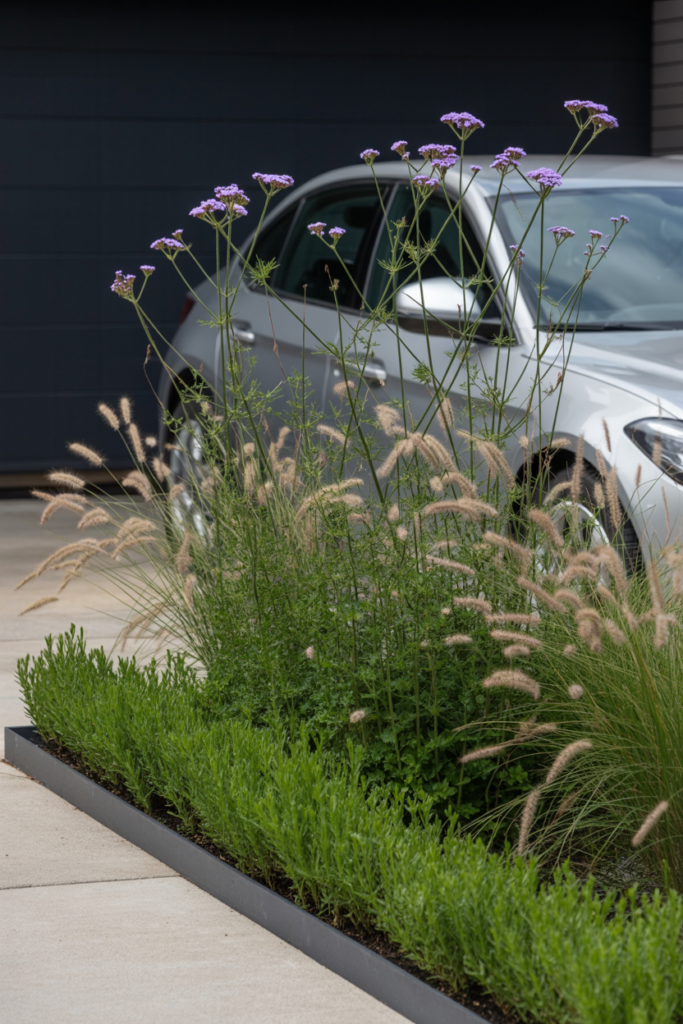
My driveway dominated the view of my front yard, so I used plants to screen the car. I built a raised bed along the edge of the driveway and filled it with airy, resilient plants like Verbena bonariensis and prairie dropseed.
This planting creates a soft, green buffer that distracts from the parked car and makes the yard feel more like a garden. Edging the driveway with low-growing grasses also helps to define the space and create a meadow-like atmosphere.
Conclusion
These ideas are just the beginning of what you can achieve in a grass-free front yard.
By choosing plants and materials that suit your climate and personal style, you can design a beautiful, sustainable landscape that you’ll love for years to come.
